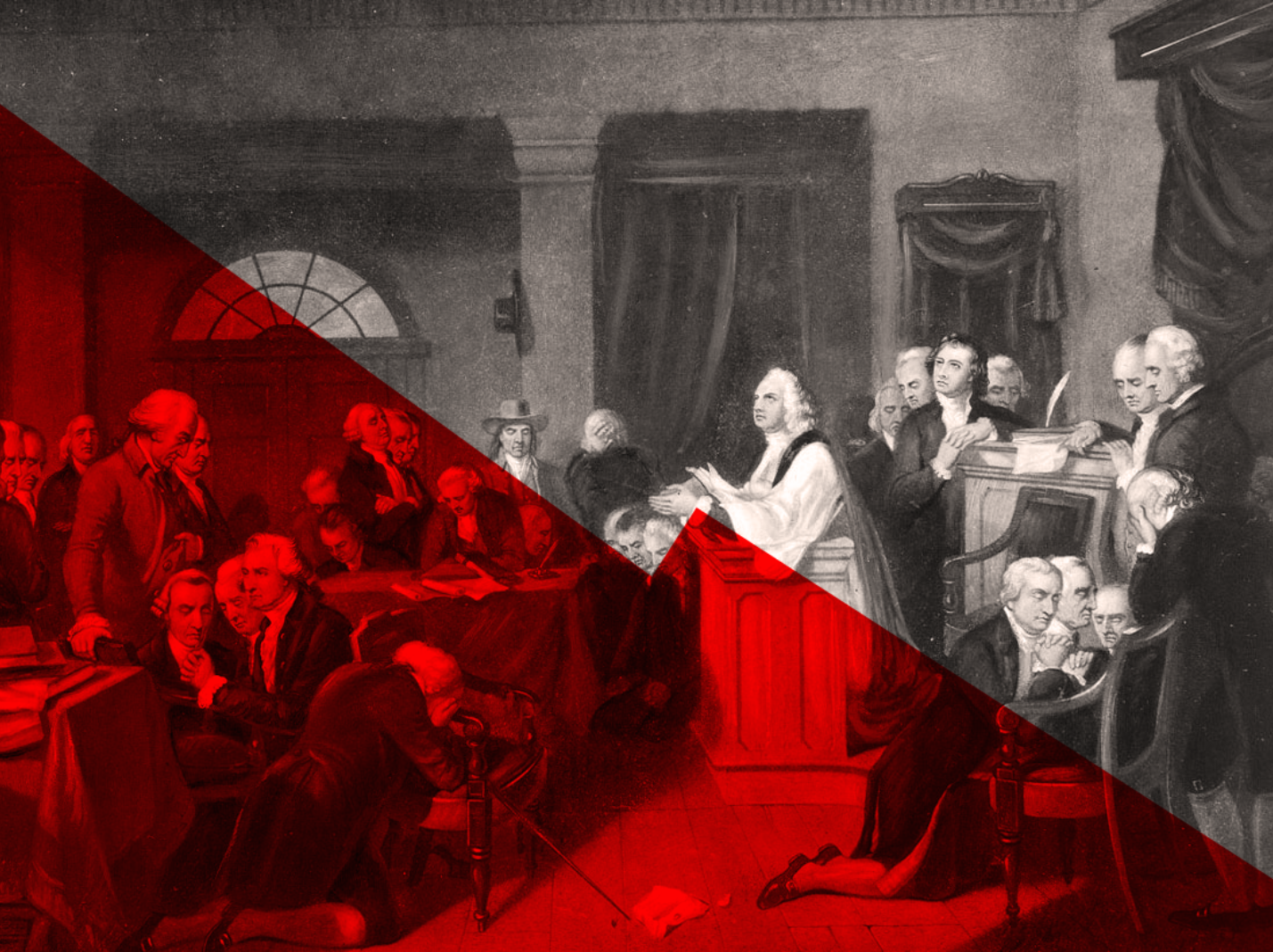
In the first days of August 1774, the Association of the Virginia Convention met and promulgated a series of resolutions that would guide its delegates to the First Continental Congress. These endorsed the policy of embargo with Britain—including slaves—until the Intolerable Acts were rescinded. The resolutions also endorsed in advance actions that would be taken by those delegates to the Congress:
Being fully persuaded that the united wisdom of the general congress may improve these our endeavours to preserve the rights and liberties in British America, we decline enlarging at present, but do hereby resolve that we will conform to, and strictly observe, all such alterations, or additions, assented to by the delegates for this colony, as they may judge it necessary to adopt, after the same shall be published and made known to us.
That’s the middle of the story. Virginians had already done a great deal to ensure that there was an Association and a Congress to begin with.
As far back as March 1773, the Virginia House of Burgesses had formed a Committee of Correspondence to contact other colonial legislatures so that they might formulate a common response to the increasingly tyrannical acts of Great Britain. After news arrived in America in the spring of 1774 that the British Parliament had passed the Intolerable Acts, the Virginia Committee of Correspondence—above all—set the decision to have a First Continental Congress meet in motion. The different colonies assented and by the summer of 1774, the Virginia House of Burgesses had been dissolved by Lord Dunmore, Virginia’s royal governor, for its decision to set aside June 1 as “a day of fasting, humiliation and prayer, to implore heaven to avert from us the evils of civil war, to inspire us with firmness in support of our rights, and to turn the hearts of King and Parliament to moderation and justice.” The Burgesses simply decided to meet without royal sanction, on their own, as the Virginia Convention—self-government continuing, revolutionarily, without royal sanction. In August 1774, this colonial assembly, with no royal authority, illegal save if one believed that law and authority derived from the people, selected delegates to speak for Virginia in an equally extra-legal convention of all the states.
Americans hadn’t yet declared independence, but they were acting ever more in common as if royal authority did not exist. And Virginia, not Massachusetts, continued to set the pace throughout the summer of 1774.
There are sorts of ways Americans could act today as if federal authority did not exist.
State laws directing federal corporate and income taxes to be sent to a different mailing address, a different electronic depository belonging to a new Continental Congress, would be most effective. But every regulation, every law, that directs those decisions be made by Washington, dollars go to Washington—each of them can be sidestepped by new conventions, new committees of correspondence, new Continental Congresses.
Or Americans can simply be Gandhist, and refuse to obey tyrannical laws. What if millions of Americans simply refused to follow “diversity, equity, and inclusion” directives?
First, I suppose we would need a committee of correspondence. Maybe Florida, our most revolutionary state, can send out the word?
Art by Beck & Stone
“State laws directing federal corporate and income taxes to be sent to a different mailing address, a different electronic depository belonging to a new Continental Congress, would be most effective”
This would not work for three reasons. First, the IRS would simply (and accurately) state that it had not received said federal corporate and income taxes and proceed on the basis of nonpayment, second, those owing said taxes would know (and be told) this and send them to the correct address, and third control of the Post Office is one of the few enumerated powers that Congress has — it’d just tell the USPS to deliver anything addressed to the new address to the old one instead.
And as to a new electronic depository, the Feds would just seize it…